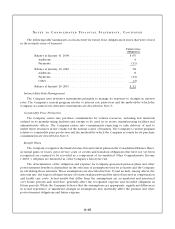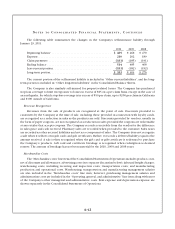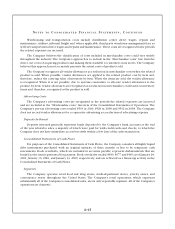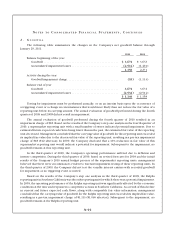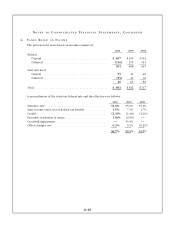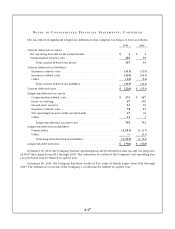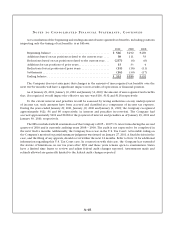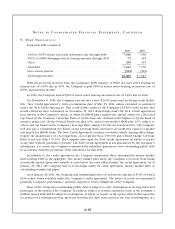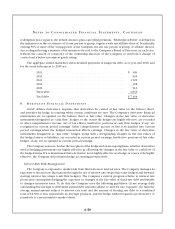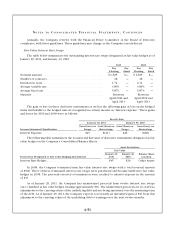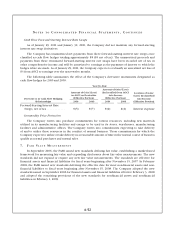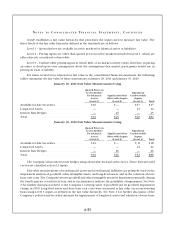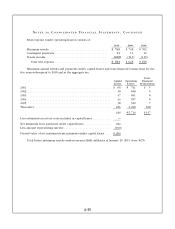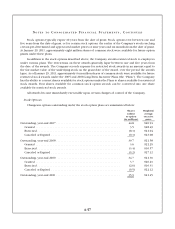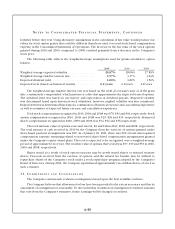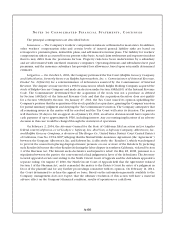Kroger 2010 Annual Report Download - page 130
Download and view the complete annual report
Please find page 130 of the 2010 Kroger annual report below. You can navigate through the pages in the report by either clicking on the pages listed below, or by using the keyword search tool below to find specific information within the annual report.
A-50
NO T E S T O CO N S O L I D A T E D FI N A N C I A L ST A T E M E N T S , CO N T I N U E D
redemption price equal to the default amount, plus a specified premium. “Redemption Event” is defined in
the indentures as the occurrence of (i) any person or group, together with any affiliate thereof, beneficially
owning 50% or more of the voting power of the Company, (ii) any one person or group, or affiliate thereof,
succeeding in having a majority of its nominees elected to the Company’s Board of Directors, in each case,
without the consent of a majority of the continuing directors of the Company or (iii) both a change of
control and a below investment grade rating.
The aggregate annual maturities and scheduled payments of long-term debt, as of year-end 2010, and
for the years subsequent to 2010 are:
2011 .................................................... $ 549
2012 .................................................... 905
2013 .................................................... 1,520
2014 .................................................... 308
2015 .................................................... 516
Thereafter ............................................... 3,636
Total debt ............................................... $7,434
6. DE R I VAT I V E FI N A N C I A L IN S T R U M E N T S
GAAP defines derivatives, requires that derivatives be carried at fair value on the balance sheet,
and provides for hedge accounting when certain conditions are met. The Company’s derivative financial
instruments are recognized on the balance sheet at fair value. Changes in the fair value of derivative
instruments designated as “cash flow” hedges, to the extent the hedges are highly effective, are recorded
in other comprehensive income, net of tax effects. Ineffective portions of cash flow hedges, if any, are
recognized in current period earnings. Other comprehensive income or loss is reclassified into current
period earnings when the hedged transaction affects earnings. Changes in the fair value of derivative
instruments designated as “fair value” hedges, along with corresponding changes in the fair values of
the hedged assets or liabilities, are recorded in current period earnings. Ineffective portions of fair value
hedges, if any, are recognized in current period earnings.
The Company assesses, both at the inception of the hedge and on an ongoing basis, whether derivatives
used as hedging instruments are highly effective in offsetting the changes in the fair value or cash flow of
the hedged items. If it is determined that a derivative is not highly effective as a hedge or ceases to be highly
effective, the Company discontinues hedge accounting prospectively.
Interest Rate Risk Management
The Company is exposed to market risk from fluctuations in interest rates. The Company manages its
exposure to interest rate fluctuations through the use of interest rate swaps (fair value hedges) and forward-
starting interest rate swaps (cash flow hedges). The Company’s current program relative to interest rate
protection contemplates hedging the exposure to changes in the fair value of fixed-rate debt attributable
to changes in interest rates. To do this, the Company uses the following guidelines: (i) use average daily
outstanding borrowings to determine annual debt amounts subject to interest rate exposure, (ii) limit the
average annual amount subject to interest rate reset and the amount of floating rate debt to a combined
total of $2,500 or less, (iii) include no leverage products, and (iv) hedge without regard to profit motive or
sensitivity to current mark-to-market status.


